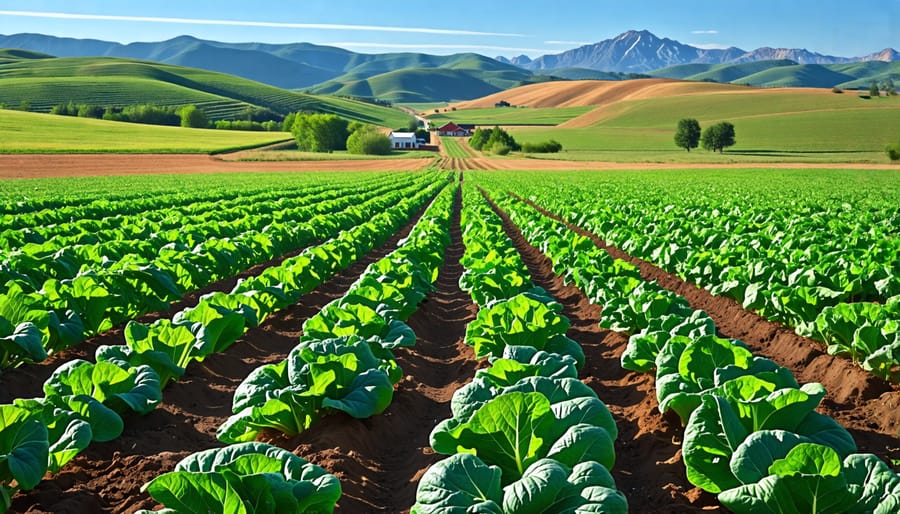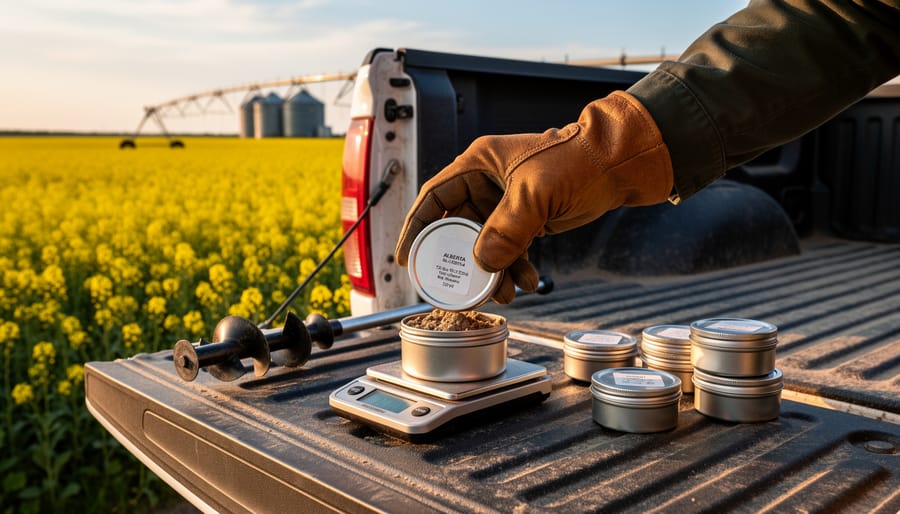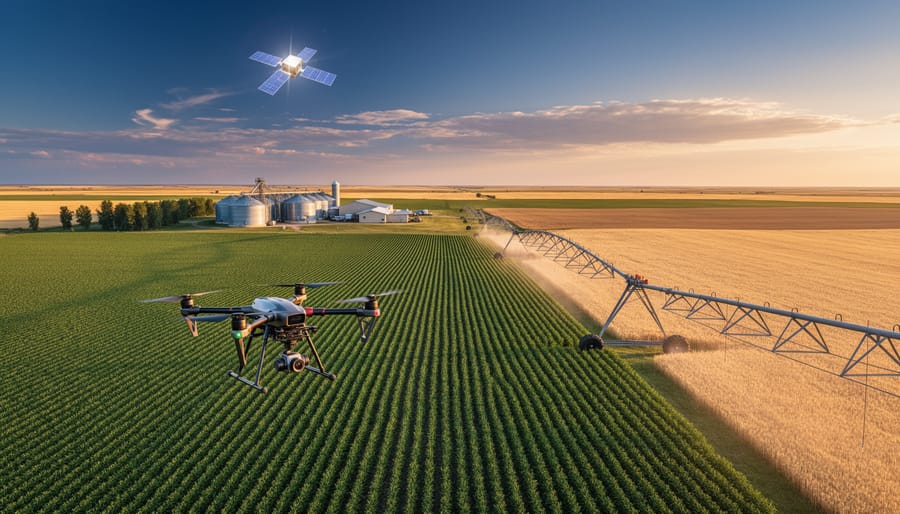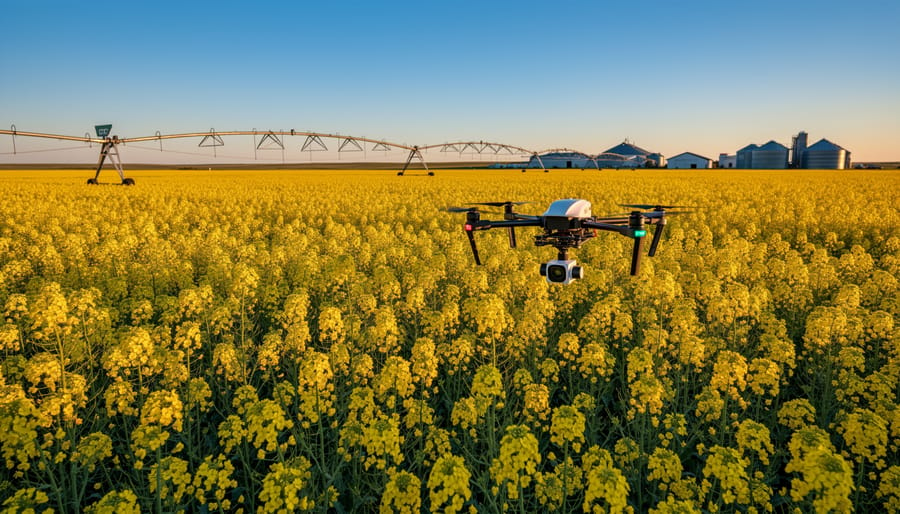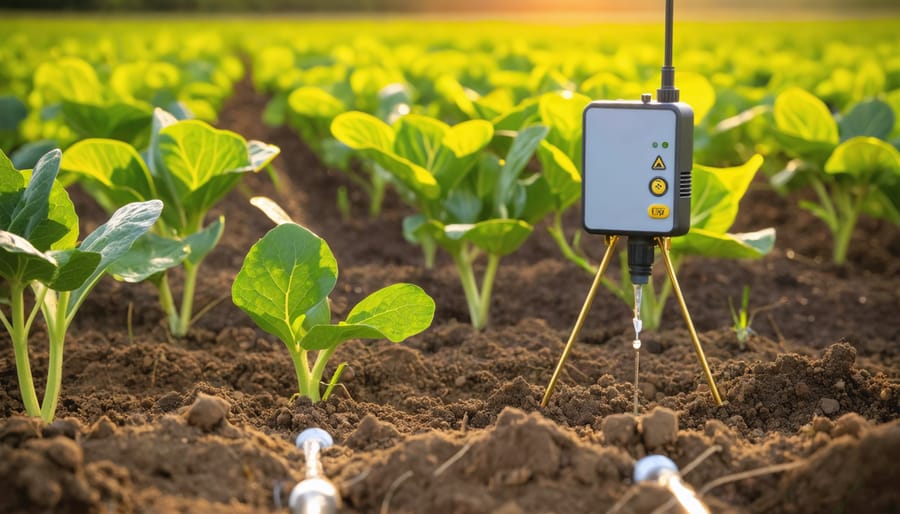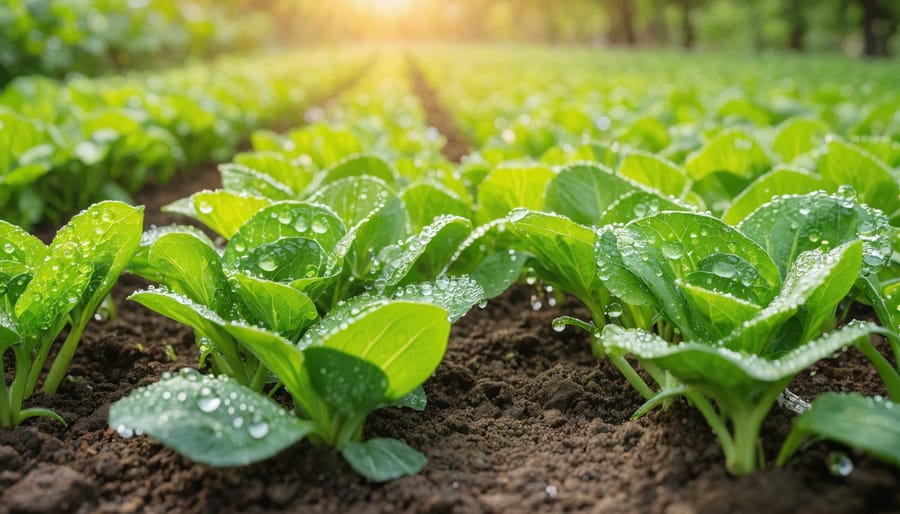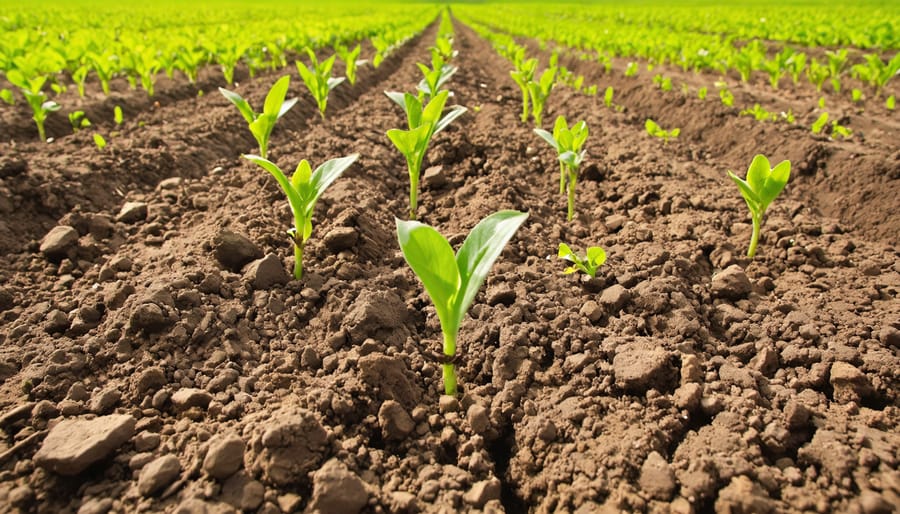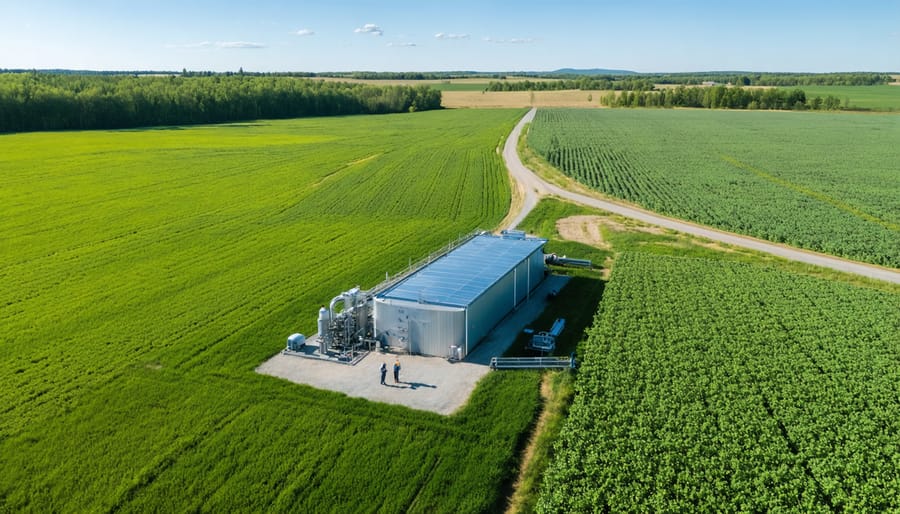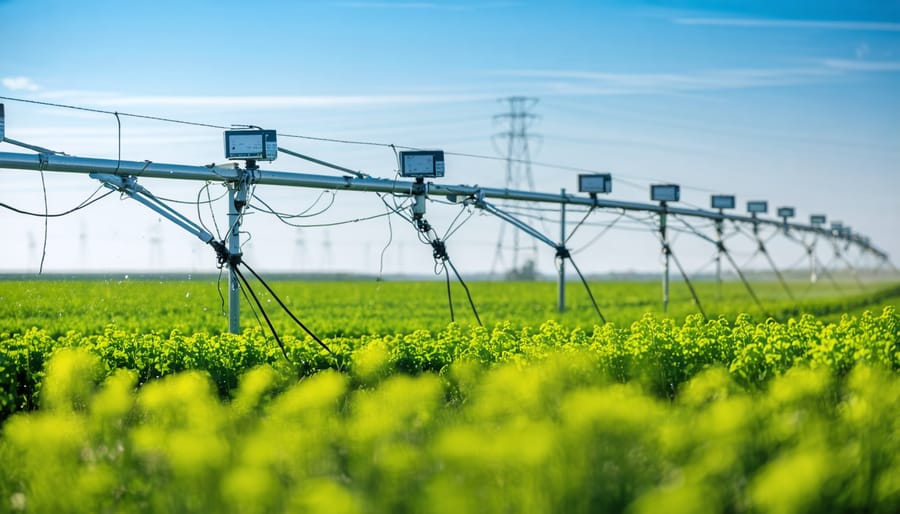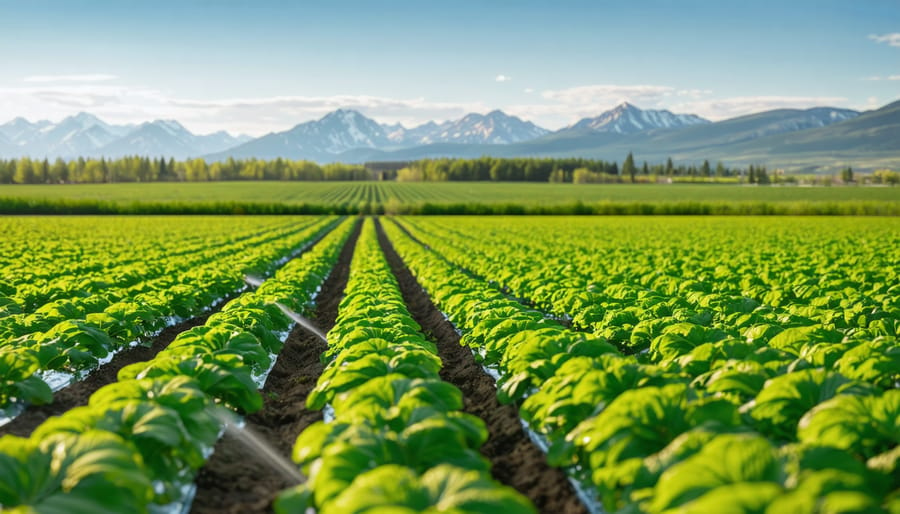Invest in efficient irrigation systems like drip or sprinkler methods to deliver water directly to plant roots, reducing evaporation and runoff losses. Implement soil management practices such as conservation tillage, cover cropping, and mulching to improve soil structure, increase water retention, and minimize erosion. Choose drought-tolerant crop varieties and native plant species that require less water and are well-adapted to local climate conditions. Recycle and reuse water wherever possible, such as capturing rainwater for irrigation or using greywater from household sources for landscaping needs.
Efficient Irrigation Techniques
Case Study: Drip Irrigation in Vegetable Farming
Jensen Farms, a vegetable farm near Lethbridge, Alberta, has demonstrated the profound benefits of drip irrigation for sustainable water use. By installing a drip system across their 200-acre operation, they reduced water consumption by 40% compared to traditional sprinkler methods. The precise delivery of water directly to plant roots not only conserves this precious resource but also improves crop yields and quality.
The Jensens worked with local irrigation experts to design a customized drip system tailored to their soil type, crop varieties, and topography. Moisture sensors and automated controls further optimize water application based on real-time conditions. As a result, they’ve seen a 25% increase in vegetable production while using far less water.
Beyond the direct benefits to their farm, the Jensens’ success has inspired other growers in the region to adopt drip irrigation. They openly share their experience and host field days to showcase the technology in action. This collaborative approach is key to promoting sustainable water use across Alberta’s agricultural community.
Jensen Farms exemplifies how innovative irrigation practices can help farmers thrive in the face of water scarcity and climate challenges. Their story offers valuable insights for others seeking to enhance both environmental stewardship and economic viability in vegetable production.

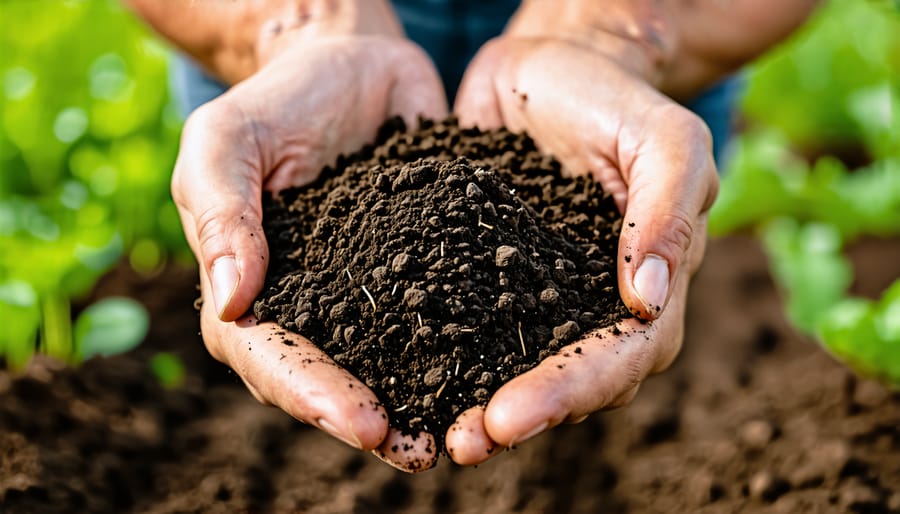
Soil Management for Water Retention
Soil management practices play a crucial role in enhancing water retention and mitigating the impacts of drought on farms across Alberta. By implementing techniques such as cover cropping, mulching, and no-till farming, farmers can significantly improve soil structure and water-holding capacity.
Cover crops, such as legumes and grasses, protect the soil surface from erosion and add organic matter when incorporated into the soil. This organic matter acts like a sponge, retaining moisture and nutrients for crops. Mulching with straw, leaves, or compost helps reduce evaporation, regulate soil temperature, and suppress weed growth, further conserving water.
No-till farming minimizes soil disturbance, allowing beneficial fungi and microorganisms to thrive. These organisms create a network of channels that improve water infiltration and retention. By leaving crop residue on the surface, no-till farming also reduces evaporation and protects the soil from compaction caused by heavy machinery.
Healthy soils with good structure and high organic matter content are more resilient to drought stress. They allow roots to grow deeper, accessing moisture from lower soil layers during dry periods. This resilience is particularly important in Alberta, where droughts can significantly impact crop yields and farm profitability.
Adopting these soil management practices not only conserves water but also improves soil fertility, reduces input costs, and enhances overall farm sustainability. As stewards of the land, Alberta farmers have the power to create a more drought-resilient future by prioritizing soil health and water retention in their management decisions.
Drought-Tolerant Crop Selection
Selecting drought-tolerant crops is a key strategy for sustainable water use in Alberta’s semi-arid climate. By choosing varieties that are well-adapted to the region’s conditions, farmers can reduce their reliance on irrigation and maintain yields during periods of water scarcity. Some examples of drought-resistant crops suitable for Alberta include:
1. Durum wheat: This hardy variety of wheat is known for its ability to withstand dry conditions and produce high-quality grain.
2. Chickpeas: Chickpeas are a nitrogen-fixing legume that can tolerate drought stress and improve soil health.
3. Canola: Certain canola varieties have been bred for enhanced drought tolerance, making them a viable option for Alberta farmers.
4. Barley: Many barley varieties are well-suited to dry conditions and can be used for both feed and malting purposes.
In addition to these crops, farmers can also consider native prairie grasses and forages that are naturally adapted to Alberta’s climate. These species often have deep root systems that allow them to access moisture even during dry spells.
By incorporating drought-tolerant crops into their rotations, farmers can reduce their water usage, lower input costs, and build resilience in the face of climate change. However, it’s important to note that no single crop is a silver bullet – a diversified approach that includes a range of drought-tolerant varieties, along with other sustainable practices like conservation tillage and cover cropping, is often the most effective strategy for long-term water stewardship.
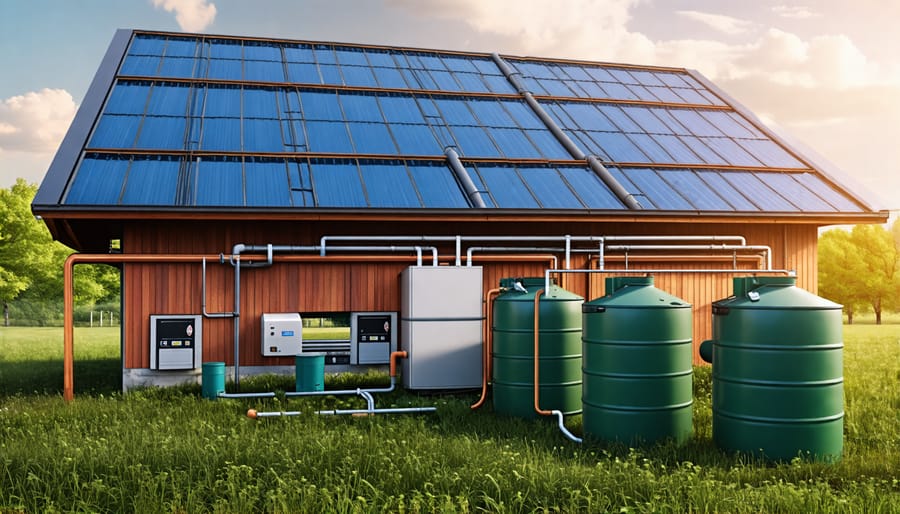
Water Recycling and Reuse
Water recycling and reuse practices offer significant opportunities for farmers to reduce freshwater consumption and enhance the sustainability of their operations. By capturing and repurposing water that would otherwise be lost, farmers can minimize their environmental impact while maintaining productive crops and livestock. Rainwater harvesting is one such strategy, involving the collection and storage of rainfall for irrigation and other agricultural uses. This can be achieved through various methods, such as rooftop catchment systems, surface runoff collection ponds, or underground cisterns.
Greywater systems present another avenue for water reuse, allowing farmers to capture and treat water from sinks, showers, and laundry for non-potable applications like irrigation. By diverting this wastewater from septic systems or treatment plants, greywater reuse reduces the strain on local water resources and infrastructure. Additionally, recovering irrigation runoff can help farmers maximize the efficiency of their water use by capturing excess water that has passed through fields and redirecting it for reuse.
Implementing water recycling and reuse practices not only conserves valuable freshwater resources but also offers environmental benefits. By reducing the demand for water extraction from rivers, lakes, and aquifers, these strategies help maintain the health of local ecosystems and protect wildlife habitats. Furthermore, the nutrients present in recycled water can potentially reduce the need for synthetic fertilizers, promoting more sustainable and organic farming practices.
As the impacts of climate change continue to challenge agricultural communities, embracing water recycling and reuse will become increasingly crucial for building resilience and adaptability. By exploring these innovative solutions, farmers in the Alberta region can lead the way in sustainable water management, ensuring the long-term viability of their operations and contributing to the preservation of our shared water resources.
Collaborative Water Management
Sustainable water use is not a solo endeavor; it requires the collective efforts of entire communities. By working together, farmers can share knowledge, insights, and best practices to enhance water conservation and efficiency across their region. Collaborative water management involves participating in local initiatives, attending workshops, and engaging in open dialogue with fellow farmers and agricultural experts.
Through these cooperative efforts, farmers can learn about innovative irrigation techniques, drought-resistant crops, and effective soil management strategies that have proven successful for their peers. Sharing experiences and lessons learned can help accelerate the adoption of sustainable practices and foster a supportive community focused on responsible water use.
Moreover, regional water conservation initiatives often provide valuable resources, such as grants, technical assistance, and educational programs, to support farmers in their sustainability journey. By actively participating in these initiatives, farmers can access the tools and knowledge needed to implement effective water management practices on their own land.
Collaborative water management also extends beyond the agricultural community. Farmers can engage with local authorities, conservation groups, and other stakeholders to develop comprehensive water management plans that consider the needs of all users. By working hand in hand, communities can ensure the equitable and sustainable allocation of water resources while safeguarding the long-term health of their watersheds.
In essence, sustainable water use is a shared responsibility that requires the active participation and cooperation of all community members. As stewards of the land, farmers play a crucial role in leading by example and promoting collaborative approaches to water conservation. Together, agricultural communities can build resilience, adapt to changing conditions, and secure a sustainable future for generations to come.
Conclusion
In conclusion, implementing sustainable water use strategies is critical for Alberta farmers to build resilience, protect resources, and contribute to a more sustainable future. By adopting efficient irrigation systems, managing soil health, selecting drought-tolerant crops, recycling water, and collaborating with fellow farmers and experts, agricultural producers can significantly reduce their water footprint while maintaining productivity. These practices not only benefit individual farms but also help to safeguard Alberta’s precious water resources for generations to come. Now is the time for farmers to take action and embrace sustainable water use as an integral part of their operations. Together, we can build a more resilient and sustainable agricultural community in Alberta.

